Video of the Week:
Indoor Palms
Upcoming Events:
January 13-15, 2016
Ramada Downtown, Topeka,KS
http://www.hfrr.ksu.edu/doc4428.ashx
RetailWorks
February 4, 2016
Manhattan, KS
Vegetables and Flowers:
All-America Selections Winners for 2016
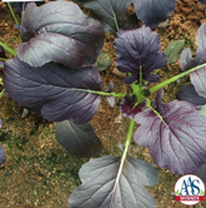
Foodies take note! All-America Selections has never had a mizuna (Japanese mustard) as a winner, much less a beautifully colored variety. Red Kingdom is a great addition to the assortment of AAS Winners now available to the home garden and fresh garden markets. Judges noted how the color was a vibrant reddish-purple all through the season and suggested that this flavorful, mild tasting green is an edible that can also be used as an ornamental in containersnor in the landscape. Gardeners will appreciate how this variety did not bolt as easily as other mizunas and produced a much higher yield throughout the season, standing up to mid-season heat.
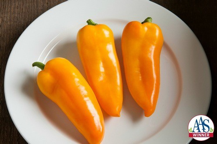
“DOUBLE YUM” was one judge’s response to our new AAS Winner Cornito Giallo F1 pepper, “The flavor on this one is totally a winner!” Starting as small green fruits, this AAS Winner develops into bright yellow jewels with a delicious sweet and fruity flavor. The peppers themselves are plentiful and durable, yet easy to eat fresh. Being an early bloomer, you will be able to enjoy these peppers throughout the growing season and well into the fall. Plant Cornito Giallo F1 in your garden this year and you can join our judges in exclaiming “YUM!”
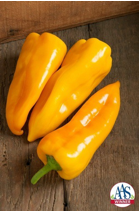
A wonderful sweet taste on a golden yellow pepper makes Pepper Escamillo F1, one of our 2016 AAS Winners. An early bearing pepper plant with a compact habit makes it an ideal choice for any home garden. Gardeners will be captivated with the high yield of peppers per plant and how the fruit itself is held off the ground for easy picking and less rotting. This plant is a winner with its all around qualities of excellent taste either raw, cooked or fire roasted, its compact size and high yield.
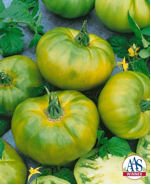
Looking for a uniquely colored yet delicious tomato with which to impress your foodie friends? Then look no further than this AAS Winner, Tomato Chef’s Choice Green F1. The newest addition to the Chef’s Choice series produces beautiful green colored fruits with subtle yellow stripes and a wonderful citrus-like flavor and perfect tomato texture. You’ll enjoy this disease free plant throughout the season with its dark green leaves and well-behaved form. You’ll be the envy of all your tomato loving friends!
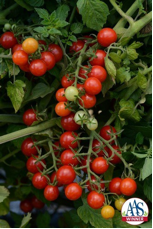
Tomato Candyland Red is the only AAS award winning currant-type tomato. Currant tomatoes are smaller in size than cherry-type and are ready to “pop” in your mouth straight from the garden. Gardeners will appreciate the dark red, sweet flavored fruit that can be enjoyed throughout the season. The tomato plant itself has a nice tidier habit than other currant-type plants with the fruit tending to form on the outside of the plant making them easier to harvest.
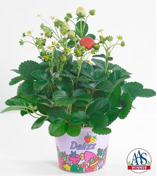
What’s not to like about our first ever AAS strawberry winner Strawberry Delizz® F1? These vigorous strawberry plants are easy to grow, from seed or transplant, and produce an abundant harvest throughout the growing season. The best part though is the wonderful sweet strawberry burst of flavor from every handpicked berry. To enjoy fresh home-grown strawberries throughout the season, even in hot summer heat, look to Strawberry Delizz® F1. These plants have a nice uniform and compact size making them perfect for containers, hanging baskets or garden plots. The hardest part of Strawberry Delizz® F1 won’t be the growing but having some strawberries left for anyone else to enjoy!
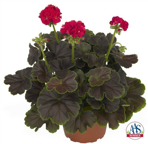
Striking foliage with large semi-double blooms of cherry pink make Geranium Brocade Cherry Night an AAS Winner this year. Gardeners looking for unique and distinct foliage to accent their containers and gardens will be delighted with Brocade Cherry Night. The bronze leaves with green margins are a remarkable and unusual addition to any design. Add the semi-double bright cherry blooms and this heat tolerant geranium is your winner for any planter, container or garden!
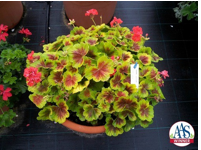
This 2016 AAS Winner, Geranium Brocade Fire, has unique bi-color foliage with a nonstop display of semi-double orange flowers that gives it an exceptional look in any garden. Geranium Brocade Fire is ideal for combination planters, landscapes and garden beds. This robust plant keeps its distinguishing foliage color and brilliant blooms throughout the hot summers then becomes a fantastic transitional flower going into fall. The orange flowers contrast with the striking foliage making this geranium a much appreciated and talked about new annual winner.
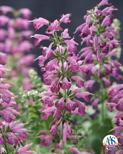
The fourth AAS Winner in the Summer Jewel™ series of popular AAS Salvia Winners is the newest in color, Summer Jewel™ Lavender. The unique flower color of dusty lavender purple is a delight in the garden and flower containers as well as a major attractor of pollinators including bees, butterflies and hummingbirds. An extra bonus is how much the Goldfinch loves these flower seeds in the fall. It’s a photo-ready moment when these complementary colors of gold and lavender connect! The early blooming, stable, compact uniform growth, and continuous flowering of this plant are additional positives to this plant. (Ward Upham)
Woody Plants:
Caddo Sugar Maples
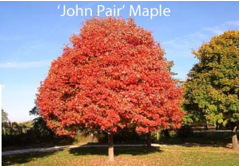
Another interesting characteristic of caddo maples is that they tend to retain their leaves in the winter and therefore have been suggested as screens or for use in windbreaks. Dr. John Pair, the late director of the Horticulture Center, selected and released two Caddo maples over 10 years ago. Both these selections color early and have consistent good red fall color. Drought tolerance and resistance to leaf scorch and leaf tatter are exceptional. However, neither will do well in a heavy clay soil that is frequently saturated. These trees can be damaged or killed if planted in wet sites.
The first selection, ‘Autumn Splendor’, has the traditional sugar maple growth pattern and needs plenty of room to mature. ‘John Pair’ is smaller and more compact and more likely to fit a residential landscape. This tree is also noted for a dense, uniform crown. If you are in the market for a sugar maple, consider these before making a final decision. (Ward Upham)
Conservation Trees from the Kansas Forest Service
All items are sold in units. Each single species unit consists of 25 plants. For example, a unit of Eastern red cedar has 25 trees per unit. Though a single species unit is most commonly purchased, three special bundles are also available including a songbird bundle, quail bundle, and pheasant bundle.
Tree planting accessories are also available including marking flags, root protective slurry, rabbit protective tubes, weed barrier fabric and tree tubes. If there have been problems with deer browsing on young trees, the tree tubes are a must.
For details and an order form, go to: https://www.kansasforests.org/conservation_trees/
Order forms are also available from local K-State Research and Extension offices. (Ward Upham)
Indoor Plants:
African Violet Troubles
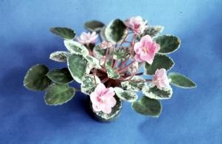
1) Spotted leaves - this occurs if you allow cool water to contact the leaves. Use only room temperature water.
2) Small plants with pale yellow leaves - often caused by too much light and inadequate fertilization.
3) Leaves curled downward - may be a result of too low temperatures (below 60 degrees).
4) Long leaf stalks and a few or small blooms - often results when plants don't get enough light.
5) Buds dry up - this might happen if there is not enough moisture in the air or soil and if temperatures are too high.
6) Plants wilt quickly and crown rots - likely they are getting watered too frequently and/or the drainage may be poor (due to potting mix or lack of container holes) or the plants were set too deep into the soil.
7) Leaf stalks rot where they rub against pot edge - high salt concentrations on the sides of the pot and near the soil surface damage the leaf stalks allowing the Botrytis disease organism to enter. You can protect the stalks by putting a strip of aluminum foil, paraffin, or a cardboard cover around the rim of the container.
8) No flowers - may be due to one or more of the following: temperature too low, soil is overfertilized, too much light or too much shade, too much or not enough water, or air contains stove gas. (Ward Upham)
Newer Lights Available for Indoor Gardens
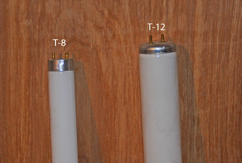
of the plants. However, T-12 lamps are fading away due to newer lamps that are a better choice for indoor gardens. These are known as T-8 and T-5 lamps. The number after the “T” refers to the diameter of the lamp in eighths of an inch. Therefore, a T-12 lamp is 12/8 or 1.5 inches in diameter and are what most people are familiar with. A T-8 is
8/8 or 1 inch in diameter, and a T-5 is 5/8 of an inch in diameter.
So, does a smaller diameter mean less light? Not at all. In fact, the T-5 can be the brightest of the three. Another advantage for these newer lamps is they use less electricity per lumen. The traditional 48-inch T-12 is rated at 40 watts. However, there are newer styles of T-12's that are 34 watts. The T-8 is rated at 32 watts and the T-5 at 28 watts.
This sounds too good to be true. Are there drawbacks? Maybe so or maybe not. First is cost if you have to replace T-12 fixtures to convert to a T-8 system. However, newer fixtures may be able to handle either T-12's or T-8's. Therefore, if you purchased fluorescent fixtures in the last few years, check to see if they are rated for T-8's before replacing them. Note that lamp costs are comparable between T-12's and T-8's. The T-5 lamps may be more expensive so check prices before converting.
The question becomes, is it worth it? If you have a T-12 fixture that is rated for T-12's only and are satisfied with your results, then maybe not. However, if you are investing in new fixtures or have fixtures that can use either T-12's or T-8's, then go with the T-8's. They will use less energy, last longer and provide more light. Prices for T-5's have been dropping so you may want to consider them as well.
The newest technology is LED lighting. LED’s have several advantages over other types of lighting including durability, long life, a cool running temperature and more latitude in choosing specific wavelengths of light. Traditionally, they have been very expensive but costs are dropping rapidly. We are starting to use LED’s as supplemental lighting in the University greenhouses but would suggest only using them on a trial basis at home until you see how they perform for you. (Ward Upham)
Contributors: Ward Upham, Extension Associate
 RSS Feed
RSS Feed
